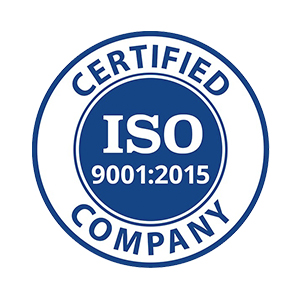
Zignuts Technolab Pvt. Ltd.
Helping Startups to turn their ideas into reality
Zignuts Technolab is a top-rated Web and On-demand Mobile App development company in the USA, Germany, and India. We strive to excel in the invention and development of the industry’s most advanced technologies including mobile apps, web, eCommerce, blockchain, IoT, wearables, cloud integration, cross-platform, on-demand, enterprise mobility, and alike. We translate these technologies into value for our clients’ customers giving them professional and best-in-class services; thereby helping businesses throughout the world harness their full potential.
Our creative team that brings Ideas to life. We help Startups & SMEs transforming their Web and Mobile based ideas into reality, via bridge the gap between Quality & Price. We mainly focus on creating a world-class cutting-edge solution that blows the doors off expectations and establishes brands as category leaders. Our team is proficient in analyzing and translating business requirements into technical requirements and architecture based on extensive experience in Strategy Consulting, Influential Clients, Proven Technology, and superior Quality Management skills. Zignuts will help you to make your digital dreams in on your hand, please get in touch with our team at [email protected].
Focus Areas
Service Focus
- Mobile App Development
- Software Development
- Web Designing (UI/UX)
- E-commerce Development
- Web Development
Client Focus
- Small Business
- Medium Business
Industry Focus
- Business Services
- Hospitality
- Manufacturing
Zignuts Technolab Pvt. Ltd. Executive Interview

At Zignuts, we are focusing on helping Start-ups and Small to Medium Enterprises (SMEs) to develop their Web & Mobile based “Ideas into Reality”, mainly along with Strategy & Consultancy, UI/UX Design, Web and Mobile Applications, WebShop & eCommerce Solutions, Cloud Architecture and Consulting, and Business Intelligence (BI) Apps.
I am the Co-founder & CTO of Zignuts and leading technical team, also working closely with business development team and project managers to analyze clients business requirements, technical researchers and preparing the best project plan to develop client's idea in cost-effective and timely manner.
We are a one-stop destination for start-ups and business owners to deliver web applications, solutions and mobile apps which would help them maximize their reach and attain more customers. We fundamentally believe in developing long-term strategic partnerships with our clients by exceeding expectations and providing a great level of transparency.
Zignuts Technolab Pvt. Ltd. Clients & Portfolios










Zignuts Technolab Pvt. Ltd. Reviews
- All Services
- Mobile App Development
- Web Development
- Relevance
- Most Recent
- Rating: high to low
- Rating: low to high

Cheating Company
Review Summary
A lot of conversations but no results from their sides.
With Zignuts you will lost your money, time, trust & dream.
What service was provided as part of the project?
Mobile App Development
What is it about the company that you appreciate the most?
Nothing
What was it about the company that you didn't like which they should do better?
All

Excellent service partner, competent contact partners
Review Summary
What service was provided as part of the project?
Web Development, Web Designing (UI/UX)

Trusted partner
Review Summary
What service was provided as part of the project?
Mobile App Development

Super experience
Review Summary
What service was provided as part of the project?
Web Development

Quality of Service from Zignuts Technolab Pvt. Ltd
Review Summary
What service was provided as part of the project?
Mobile App Development, Web Development

Best Qualitative and cost effective work
Review Summary
What service was provided as part of the project?
Mobile App Development, Web Designing (UI/UX)
What is it about the company that you appreciate the most?
Delivery on what commitmented

Professional technical team
Review Summary
What was the project name that you have worked with Zignuts Technolab Pvt. Ltd.?
professional technical team
What service was provided as part of the project?
Mobile App Development
What is it about the company that you appreciate the most?
commitment and delivery on time.

Amazing Tech by Zignuts
Review Summary
What service was provided as part of the project?
Web Development

Very Professional and best service
Review Summary
What service was provided as part of the project?
Mobile App Development, App Designing (UI/UX), Web Designing (UI/UX)

Great people to work with and very professional
Review Summary
What service was provided as part of the project?
Mobile App Development

Great company to work with
Review Summary
What service was provided as part of the project?
Mobile App Development

Thoroughly Professional
Review Summary
What service was provided as part of the project?
Mobile App Development, App Designing (UI/UX), Web Designing (UI/UX)

Mobile app and web development
Review Summary
What service was provided as part of the project?
Mobile App Development, Web Development

Highly dependable Software development partner
Review Summary
What service was provided as part of the project?
Mobile App Development, Web Development, Testing Services
What is it about the company that you appreciate the most?
Creativity app development skills and continuous improvement based on customer feedback.

Excellent Service.
Review Summary
What service was provided as part of the project?
Mobile App Development
- 1
- 2












